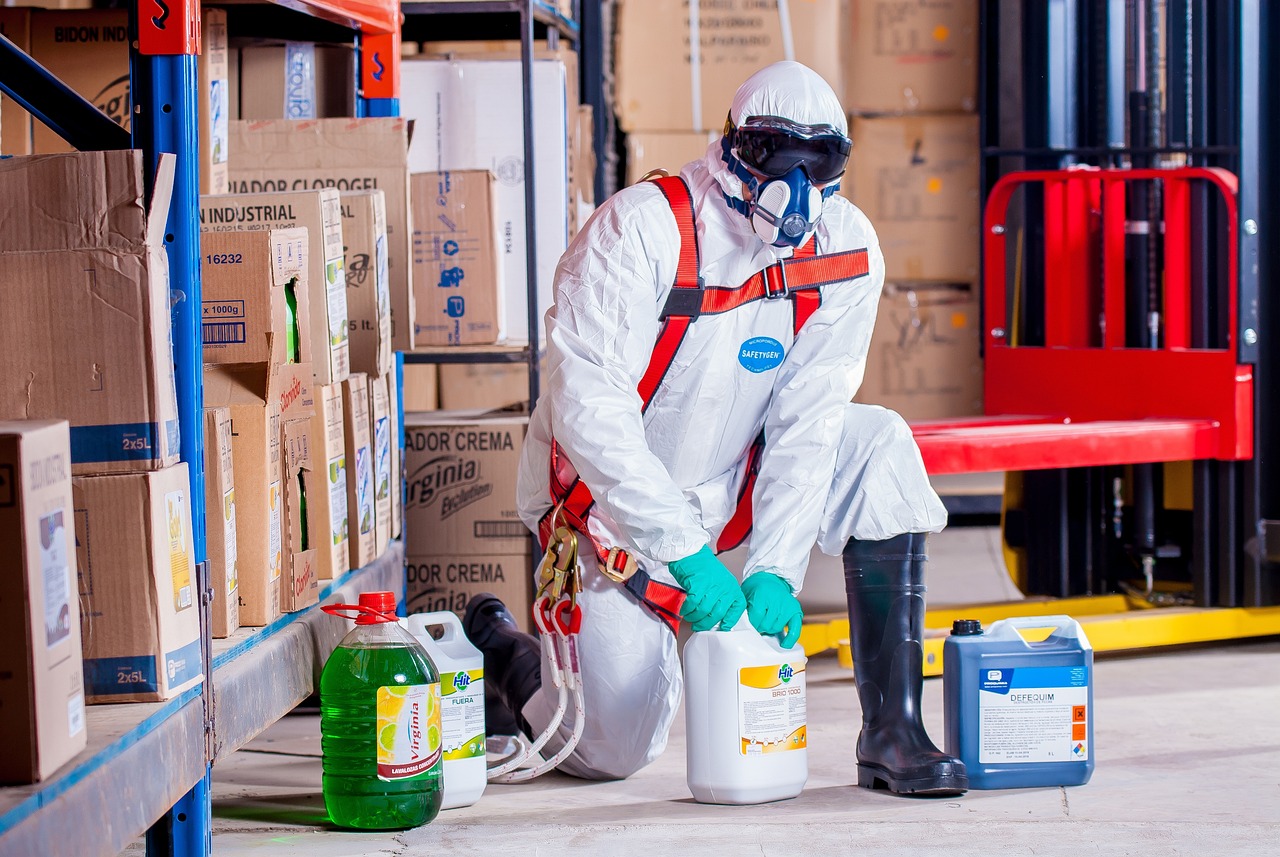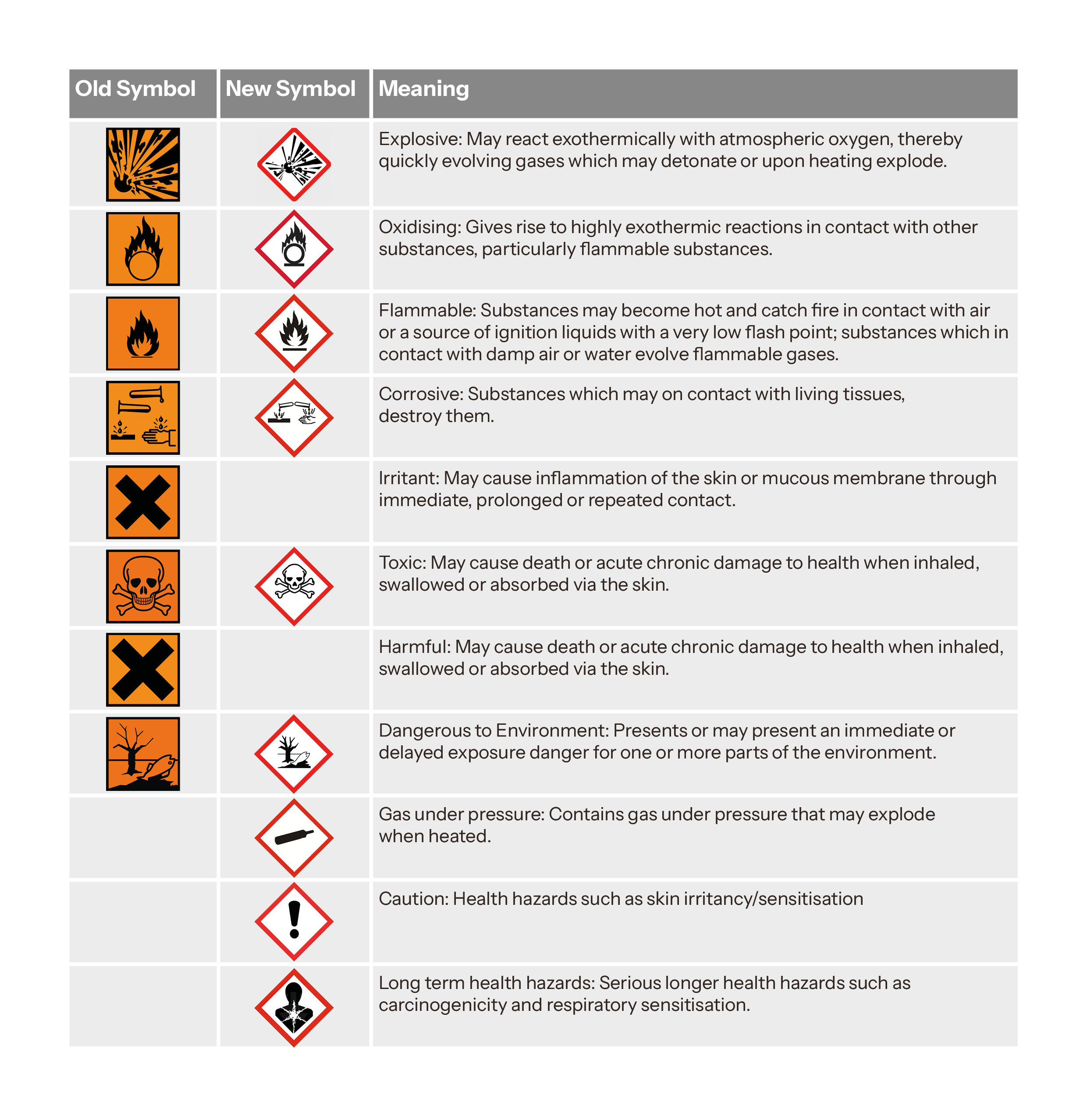Introduction
Work activities involving substances at work can put individual’s health at risk and are regularly carried out at an employers premises both by employees and contractors. These activities can have serious implications for all that may be exposed to them if not carried out in a safe and proper manner.
To control exposure to substances hazardous to health arising out of or in connection with the work, the statutory requirements of the Control of Substances Hazardous to Health Regulations 2002 (as amended) aim to assist organisations in compliance with legislation and to prevent injuries occurring and eliminate or reduce acute or chronic ill health at work.
The regulations cover;
- Chemicals
- Products containing chemicals
- Fumes
- Dusts
- Vapours
- Mists
- Nanotechnology
- Gases and asphyxiating gases and
- Biological agents (germs that cause diseases such as leptospirosis or legionnaires disease and germs used in laboratories).
If the packaging displays a hazard symbol then it is classed as a hazardous substance.
The COSHH regulations do not cover;
- Lead,
- Asbestos
- Radioactive substances
These have their own specific legislation.
Click here to read some frequently asked questions about Asbestos.
Responsibilities
Employers must ensure:
- Manufacturer Safety Data Sheet (MSDS) for all new products are obtained prior to use.
- Substances or work processes that involve or create substances that are hazardous to health are risk assessed and controls implemented to reduce the level of risk to the lowest practicable level.
- The provision, maintenance and condition of any control measures implemented e.g. Local Exhaust Ventilation (LEV) systems, Personal Protective Equipment (PPE), Respiratory Protective Equipment (RPE), housekeeping and waste control, etc.
- Where such control measures are provided, that users are trained in the use, maintenance, storage, and disposal.
- Mechanical controls are kept in efficient working order and good repair: e.g., exhaust ventilation equipment is tested at suitable intervals and service records are retained.
- Information, instruction, training and suitable supervision where hazards have been identified and where appropriate, health surveillance is also provided.
- That suitably competent persons* are trained to conduct assessments and carry out reviews of these assessments at appropriate intervals and the assessor is informed of any changes to current work arrangements or procedures and changes in substances, etc. that can have implications of managing the control of substances hazardous to health, therefore ensuring assessments are updated or revised as necessary.
- Where vulnerable persons may be exposed, consideration must be made to protect them from such exposure i.e. expectant or new mothers, young persons, or those with underlying health conditions that may be further affected by exposure.
- Employees, where appropriate, receive exposure monitoring and health surveillance through an Occupational Health monitoring programme.
- Plans and procedures are in place to deal with accidents, incidents and emergencies concerning exposure to a hazardous substance, for example an accidental spillage of a substance.
* Assessors can be any employee or competent person who has been suitably trained and therefore conversant with the operation and procedures involving the substance.
In addition, employers must ensure that contractors and service providers also:
- Comply with all health and safety legislation and relevant industry guidance including COSHH.
- Ensure equipment or products used comply with current British and European standards, legislation, industry guidance and they are serviced maintained and tested accordingly.
- Ensure where necessary that all appointees, workers and sub-contractors are competent to undertake the services required, and where appropriate checking training records and request evidence of certification.
- Be authorised to carry out the work and comply with the employers health and safety arrangements.
- Report incidents, accidents, and near misses that involve hazardous substances
Employees must:
- Comply with risk assessments and all control measures identified through assessment.
- Report any poor working practices and/or defective equipment immediately and take out of use.
- Report any ill-health effects (if as a result of work activities or exposure).
- Additionally report any underlying health issues, or where pregnancy requires consideration.
- Undertake any training and confirm their understanding of the safe use of hazardous substances they utilise or are exposed to at work.
- Work only within the controls identified as required in the COSHH assessment.
- Safely and correctly wear, use, store and dispose of PPE or RPE identified in the COSHH assessment
- Report to their employer, any failure of inability to work within the controls.
- Immediately implement defined plans and procedures to control any accident, incident or emergency involving a hazardous substance and report such incidents to their employer.
- Attend any health surveillance programme as required.
Labelling
*A “Globally Harmonised System” to assist trade across continents resulted in the Chemical Labelling and Packaging Regulations and subsequent changes to the pictograms and classification of chemicals and substances.
Retention of records
Assessments
Assessments must be retained not only as long as a substance is in use but also on the premises. Obsolete COSHH assessments (for substances or activities no longer undertaken) must be retained for five years from the date the substance was removed from use or activity stopped.
Training
Records relating to COSHH must be retained for a minimum of five years from the date the training took place. Further refresher training should be undertaken at suitable intervals to ensure that everyone remains conversant with the safe storage, handling, use and disposal of the substance and any equipment provided as a control measure to prevent exposure.
Health surveillance
Such records must be retained in a suitable form for at least 40 years from the date of the last entry.
Training requirements
All new personnel, both permanent and temporary, who may be tasked with or exposed to hazardous substances must also be appropriately trained and competent to carry out the task in a safe and proper manner for their environment.
All identified assessors must attend appropriate COSHH assessor training as requested to include appropriate elements of theory in conducting or reviewing risk assessments and practice on the use, and application of control measures.
Monitoring compliance
Compliance must be continually monitored as part of the regular day-to-day activities i.e., through accident incident reports, staff complaints, management requests and internal inspections and audits.
Non-compliance
Issues which cannot be resolved locally, breaches in or failures to meet COSHH regulations, must be reported to the employer and as appropriate, raised in local department meetings. Where appropriate an Incident Report must be completed.



